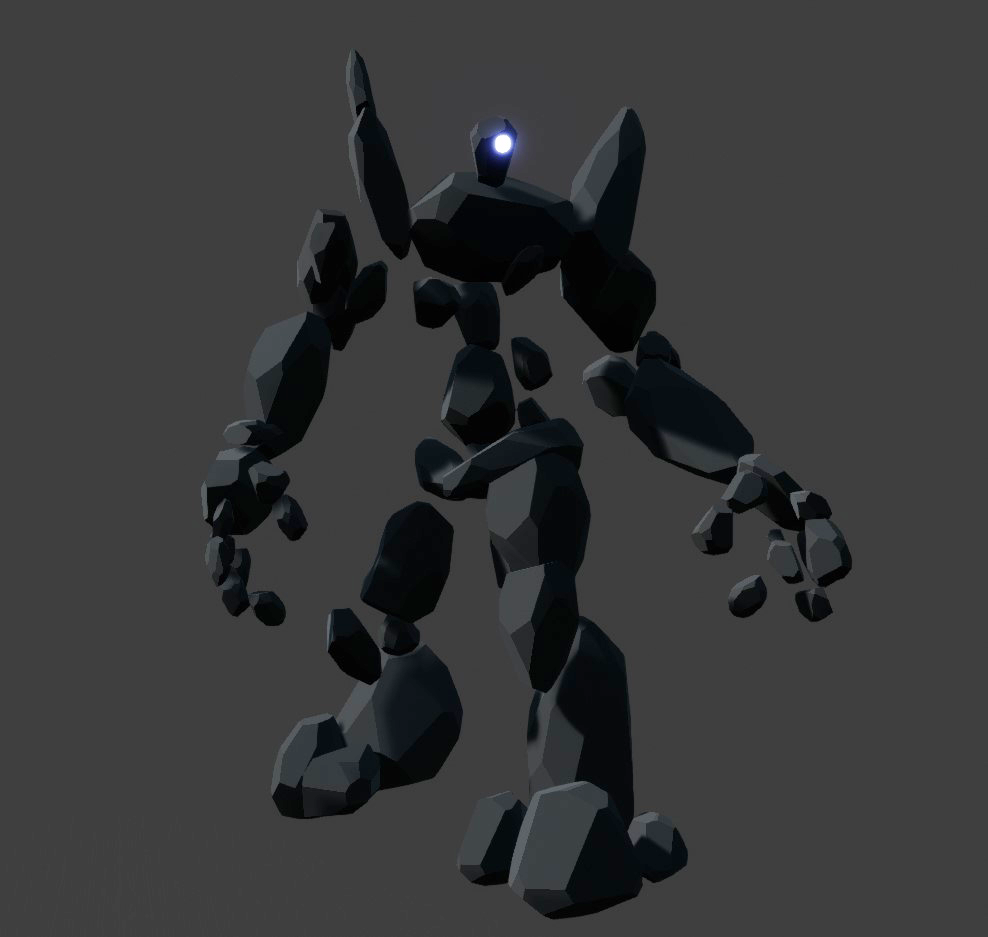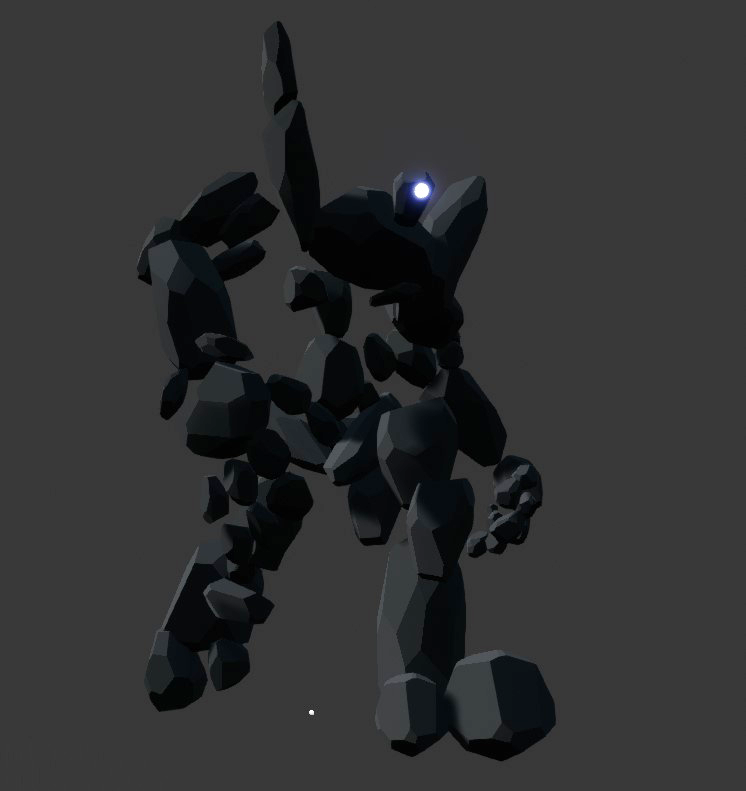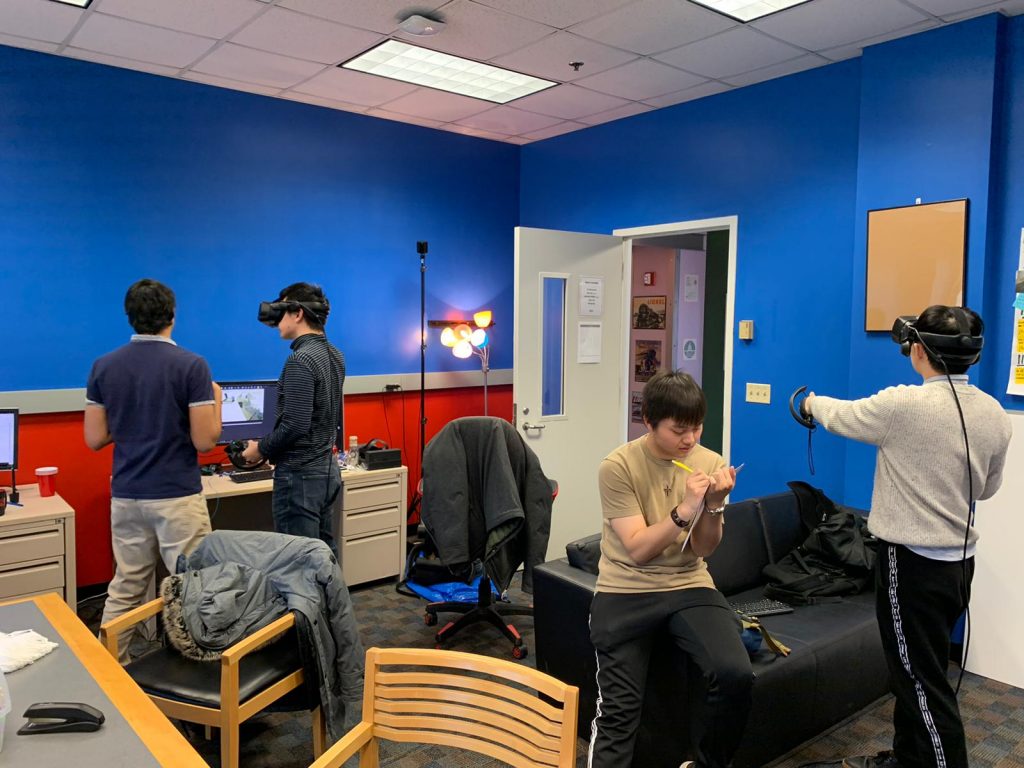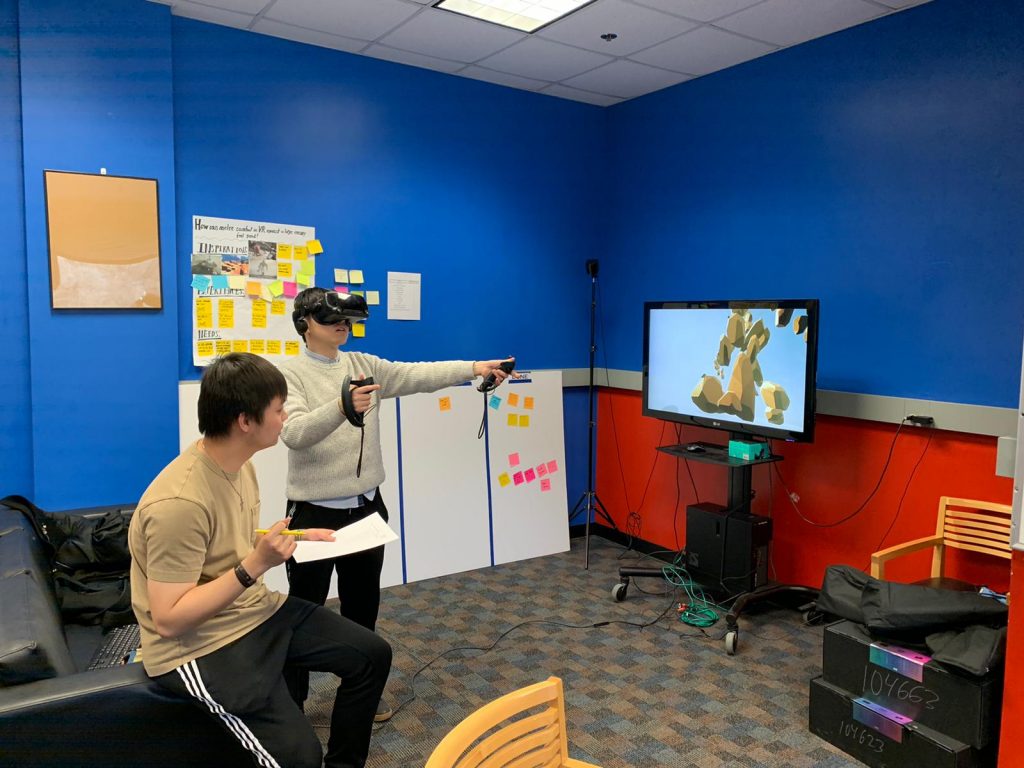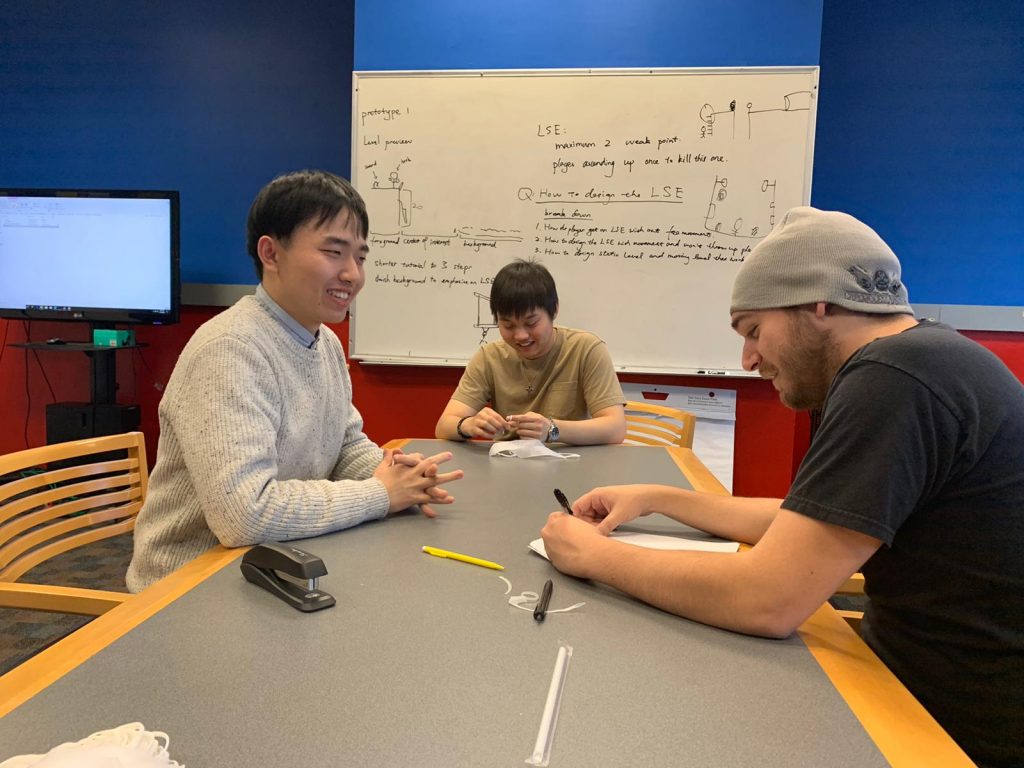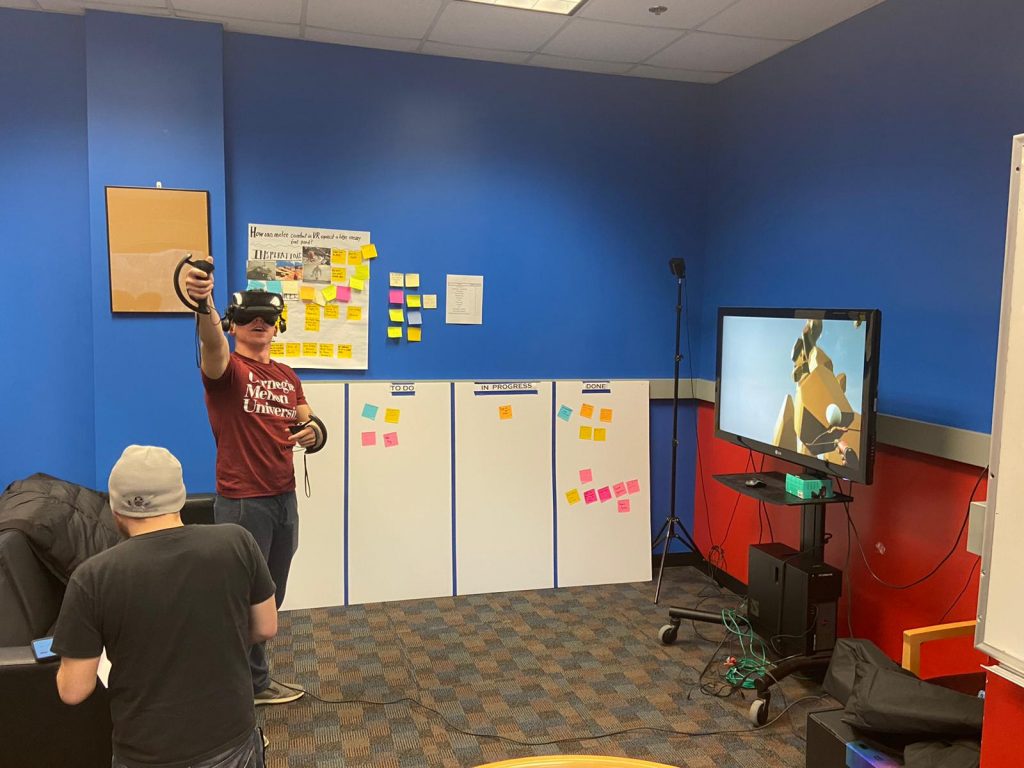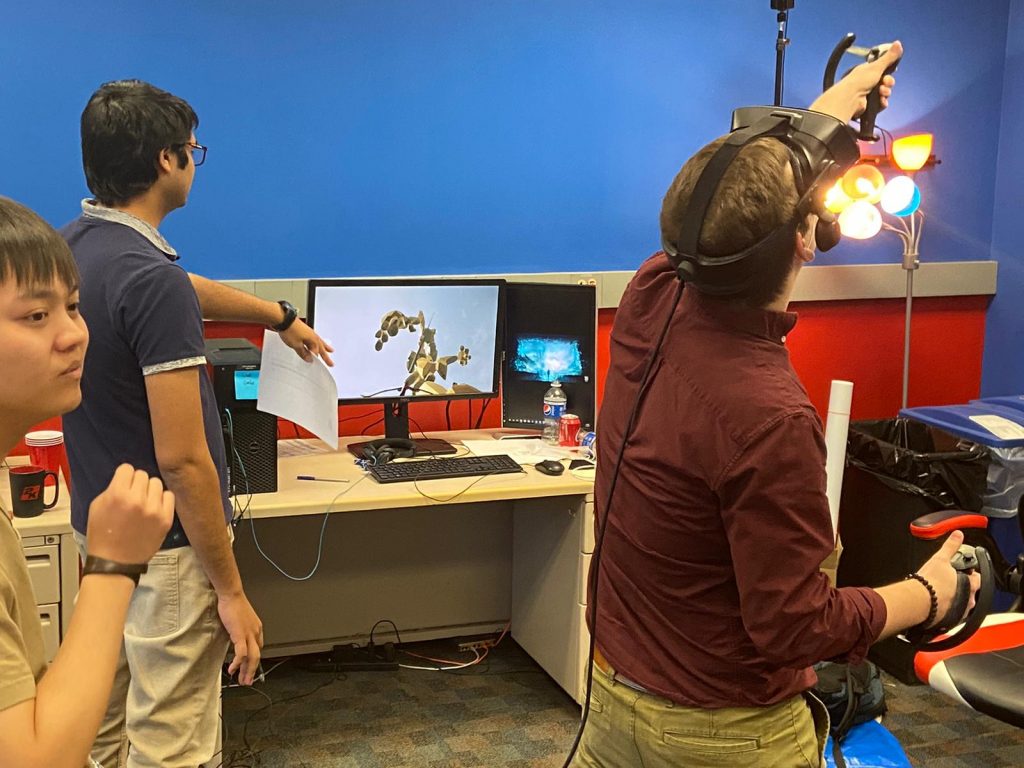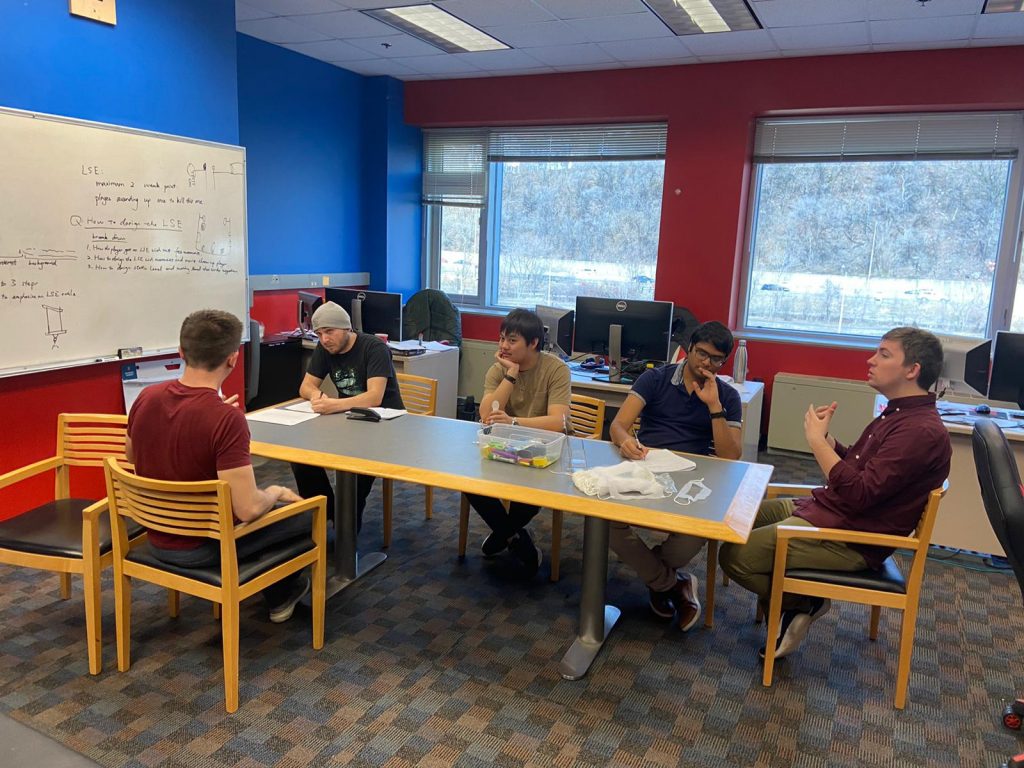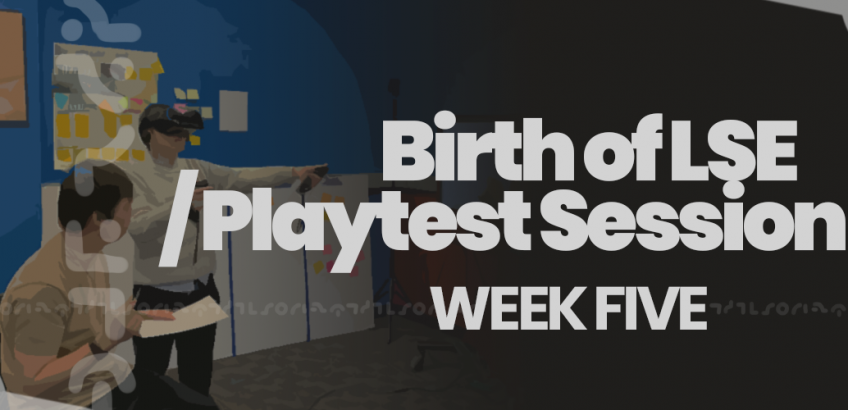
Week 5 – Birth of the LSE / Playtest Session 1
Just when we think the previous week saw growth, we somehow happen to outdo ourselves!
A brand new LSE is ready to be taken down!
On the programming side of things, auto-aim was implemented for the hook shot to allow for an easier time grappling to trees. With this in place, aimming is not as important (since that is not the focus of our project). We hope that this will decrease the skill gap when combating the LSE.
In order to push the scale more, a new introduction moment was added. This moment not only provides a little bit of narrative flavor into the LSE, but also serves to hit the loom response we’ve been learning about:
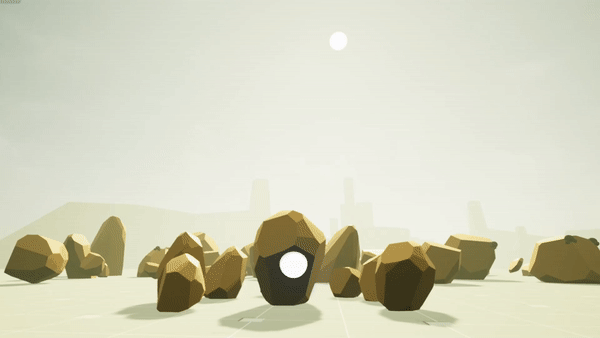
In addition, the basic game loop is now complete. One must ascend the LSE and hit its eye to defeat it. We plan on adding multiple points to destroy later on, but having one at the very time allows us to test for our question of the week:
How does it feel to traverse the LSE?
As mentioned before, our previous tutorial area was way too long and did not get the player to the LSE quickly enough. A new one was constructed with the sole purpose of learning the mechanics within one and a half minutes and getting them to the LSE before the two-minute mark. This area allows for a little bit of playtime before the giant challenge comes along.
Audio has also been gaining a lot of traction as a way for a moment to be amplified and exemplified. To this end, a variety of sounds have been created and implemented. Taking out the sword produces an unsheathing sound effect, while grabbing the hookshot from your hip also provides the player with auditory feedback. A handful of climbing sound effects were made specifically for traversing trees as well.
The biggest sound changes came once the LSE’s design was finalized and imported. With the addition of the eye acting as some kind of “mystic crystal power source”, the roar of the LSE and other SFX relating to it will all have this kind of mystical energy surrounding it.
With so many changes, our mindset has been shifting a bit as well. We’ve been thinking about how much to look at our prototype through an exergame lens; that is, can physical tolls amplify the experience and lead to your victory having more satisfaction?
With so much swirling around, we decided to take our project to the internet.
Posting to subreddits such as Valve Index, VR Devs, and Virtual Reality, we received numerous comments about VR titles we were previously unaware of while also getting suggestions on features the community would like to see in an experience like this. This kind of feedback proved useful by allowing us to see more of what has been done, what works, and what frontiers we can try and push.
Given this new LSE, level design, community feedback, “question of the week”, and more, we’ve been able to polish up some key features and get to one of our biggest tasks:
PLAYTESTING
After having 12 of our wonderful ETC comrades test our prototype and give us feedback, we are able to crunch some surface-level data and see what’s been working thus far.
On top of a questionnaire after the experience, we also probed the players while they were on their adventure. Taking cues from an ETC project last semester called Front Seat, we utilized some of their motion sickness surveys for our use.
While there is still more data to dig through and comments to categorize, we received some pretty interesting information.
The following numbers are averages based on a 1-7 scale, with 7 being the most.
- How did you feel about the scale of the LSE? = 5.9
- How strong was the intro moment with the LSE (ie. the GIF above) = 4.9
- How difficult was it to slay the LSE? = 5.2
- How tough was knowing where you were on the LSE itself (ie. disorientation) = 3.9
In addition, no one was above a 6 out of 15 on the motion sickness survey during the experience, and even then a 5 or a 6 was rare at best.
We also asked “how are your motion sickness symptoms (like dizziness, nausea, etc.) on a scale from 0 (none) to 3 (severe)” after the experience, and received an average of 0.75
Some of these numbers surprised us, specifically the level of disorientation. Given the current physics of the hook shot, there is a lot of swinging around. This aspect, coupled with the lack of texture on the LSE, had us guessing that this would be more of an issue than it appears to currently be. We were also surprised by the lack of motion sickness overall. No vignettes or other effects are in place. We are theorizing that since the LSE is so large and constantly in your field of view, that even though it is moving when you are on it, it is blocking out the majority of the background including the horizon line. More playtesting and tests will have to occur before we nail down the real reason why.
Numbers that could be improved include points 1 through 3. We would love to get the sense of scale up just a bit more, and have the intro moment be more rewarding and awe-inspiring. In addition, decreasing the difficulty would allow for more accessibility. A good majority of the difficulty seems to step from the “gripping” control scheme (among other things). While more testing could be done, we have started discussions about how to alleviate this learning curve more.
This was an exhausting week with tons of learning both about what we need and want to test as well as how to run playtests. We plan on both crunching some data and asking a brand new question next week!
